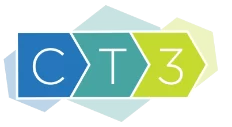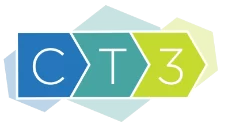Reflecting on our professional journeys, we can all recall times when we didn’t readily embrace feedback. These instances offer valuable insights into the root causes of feedback resistance, whether due to discomfort, perceived threat, or reflexive response. Did we resist due to emotional discomfort, cognitive dissonance, or external pressures? Or was it a matter of trust in the feedback provider or process—confidence in the credibility, expertise, and intentions of the feedback provider or the feedback process? What form did our resistance take—defensiveness, avoidance, or outright denial? Exploring these questions helps us grasp the underlying dynamics of feedback resistance and apply this understanding to foster a culture of openness and growth.
The 6 Ds of Feedback Resistance
The most common forms of feedback resistance can be categorized and understood as the 6 Ds: Dodge, Defend, Deflect, Deceive, Disengage, and Deny. Their responses often manifest as tactics employed, consciously or not, to mitigate the discomfort or threat perceived from feedback.
As you read through each definition and example, reflect not only on the resistance you’ve encountered but also consider which of these responses you may have demonstrated. This exercise allows you to empathize with others’ reactions to feedback and gain insights into your own tendencies when receiving constructive criticism.
Dodge: Providing excuses as to why they are unable to implement the feedback to avoid accountability or discomfort.
- Example: “I don’t have enough time to implement these changes right now. My schedule is already overloaded with other responsibilities.”
- Response Strategy: Show understanding while conveying confidence and maintaining focus. “I understand your concerns, I can see how you find these might impede progress. Let’s identify some specific steps we can take to address these challenges while still moving forward. Can you share more about what support you might need to feel more confident implementing these changes?”
Defend: Justifying actions or decisions by rationalizing to protect one’s reputation or sense of self.
- Example: “I’ve been using this approach for years, and it’s always worked well for me. I don’t see why I should change it now.”
- Response Strategy: Acknowledge their perspective, then redirect. “I appreciate your perspective. What are the limitations of continuing that approach? How might implementing the feedback contribute positively?”
Deflect: Shifting focus instead of addressing issues directly to evade accountability or responsibility.
- Example: “But what about the new curriculum we’re implementing next month? Shouldn’t we focus on that instead?”
- Response Strategy: Acknowledge, refocus, and ground in impact. “I understand your point, but let’s stay focused on [specific topic or issue] for now. What’s the potential impact of addressing this?”
Deceive: Offering non-committal responses to avoid accountability or commitment.
- Example: “Okay, I’ll think about it.”
- Response Strategy: Emphasize the importance and facilitate commitment. “I understand your willingness to consider it. However, it’s crucial that we actively address this. Is there anything hindering you from having this in place by [specify a deadline]? Do you need any support from me?”
Disengage: Ignoring or disregarding input without acknowledgment to avoid discomfort or confrontation.
- Example: Feedback is met with silence, demonstrating a reluctance to engage.
- Response Strategy: Inquire and engage. “I’m curious about your silence. Can you share what you heard? I’d like to hear what surfaced for you and your thoughts.”
Deny: Rejecting feedback outright, refusing to acknowledge its validity or relevance.
- Examples:
-
- “I don’t think that feedback is accurate. You misinterpreted the situation.”
-
- “I don’t believe you have the experience to give me valid feedback.”
-
- “I’ve been teaching for years; I know what I’m doing. This feedback is unnecessary.”
- Response Strategy: Acknowledge their perspective and genuinely seek to understand. “I truly appreciate your transparency. Let’s dive deeper into this feedback together to align our perspectives. Can you elaborate on why you feel this feedback may not apply in this context?”
Closing Considerations
Recognizing, understanding and effectively responding to these forms of resistance is essential for fostering a culture of openness and growth. Each response tactic can hinder personal and professional development if not addressed constructively. While these responses are framed as avoidance tactics, it’s important to recognize that not all pushback or resistance signifies a general unwillingness to accept feedback. Actively listening and remaining open to differing perspectives is crucial, as there could be validity in their challenge that might illuminate underlying issues. Seeking to understand while being prepared to respond effectively and redirect when necessary is essential for navigating and addressing resistance constructively.
— Richard Frank, Ed.D.
Associate, Program Lead


